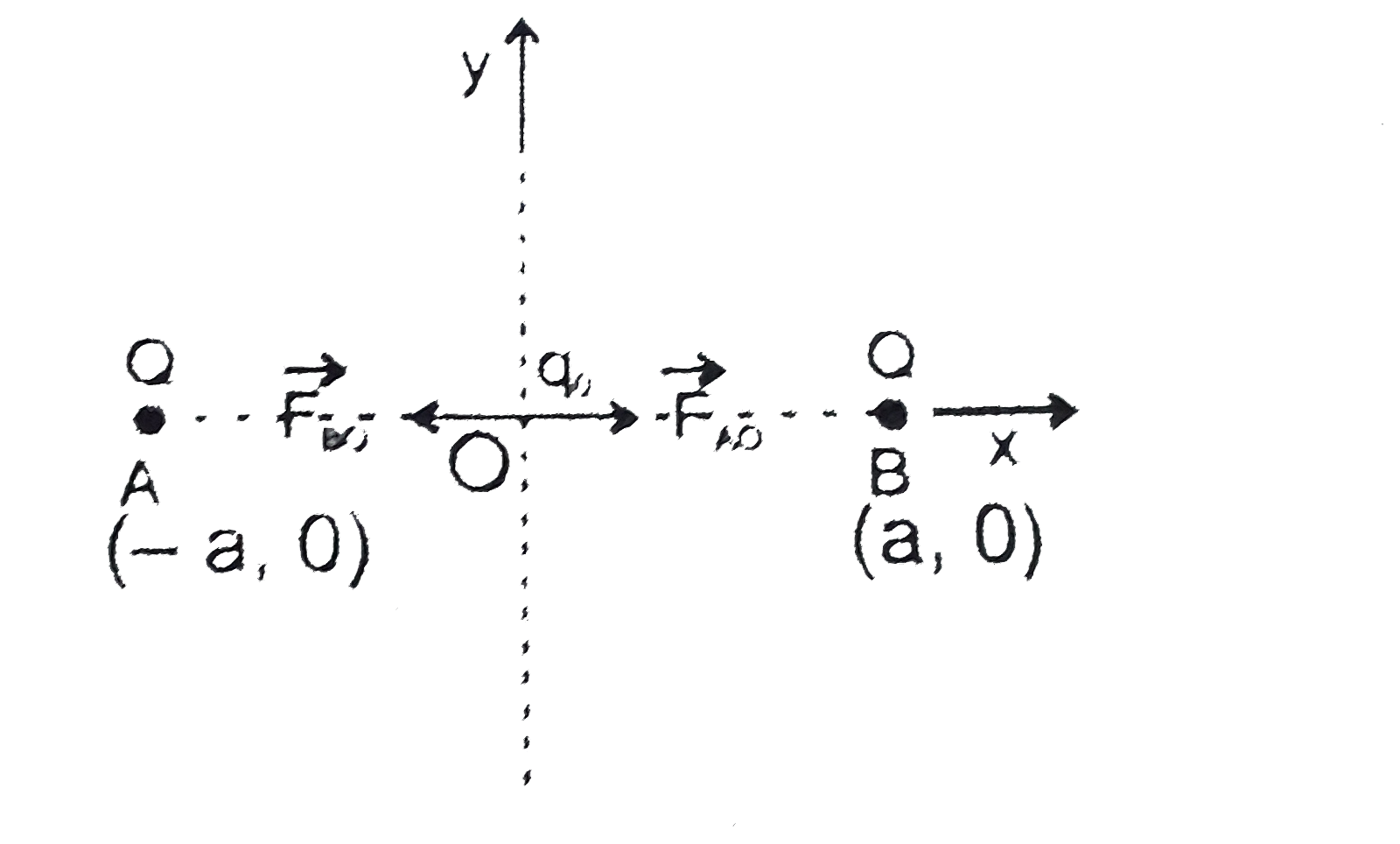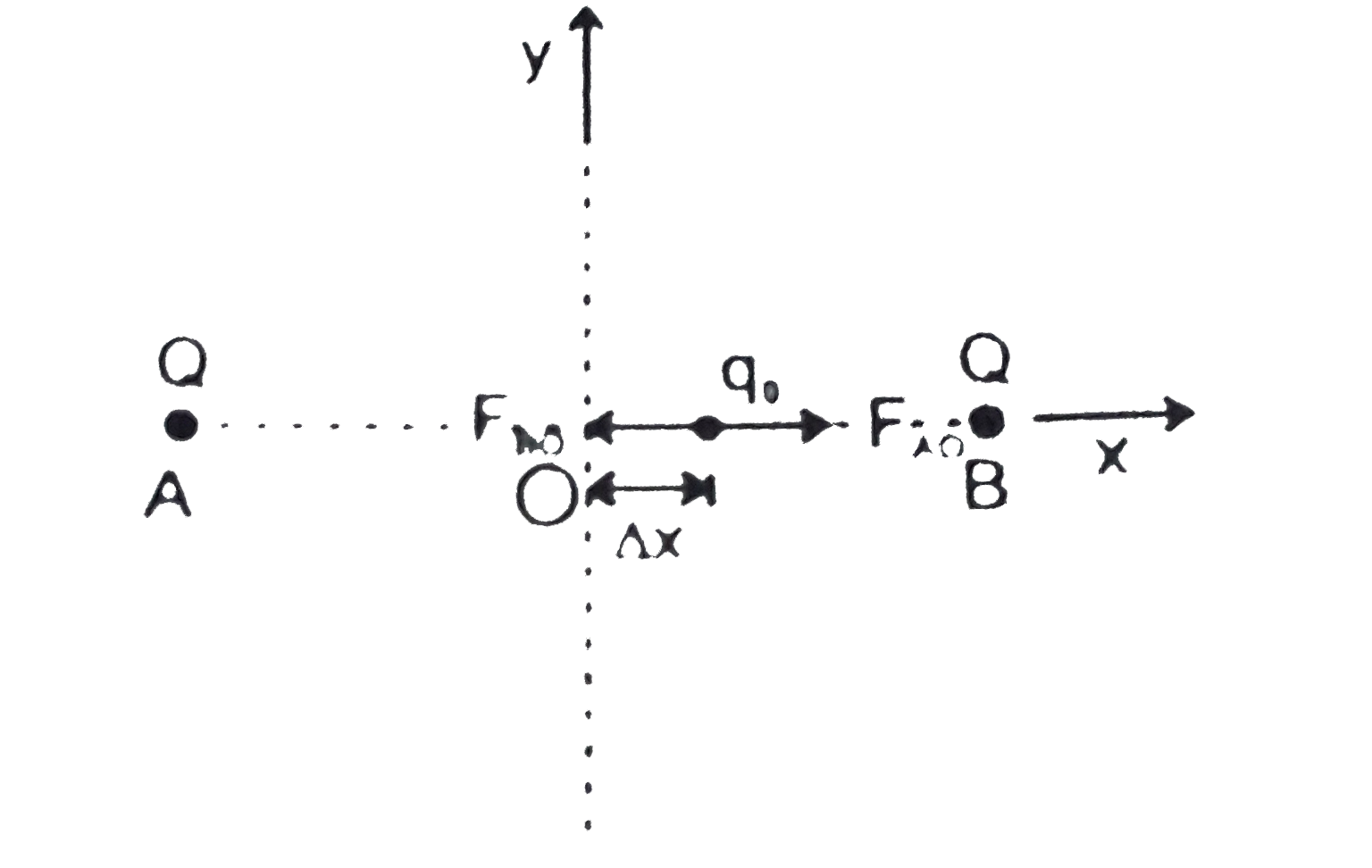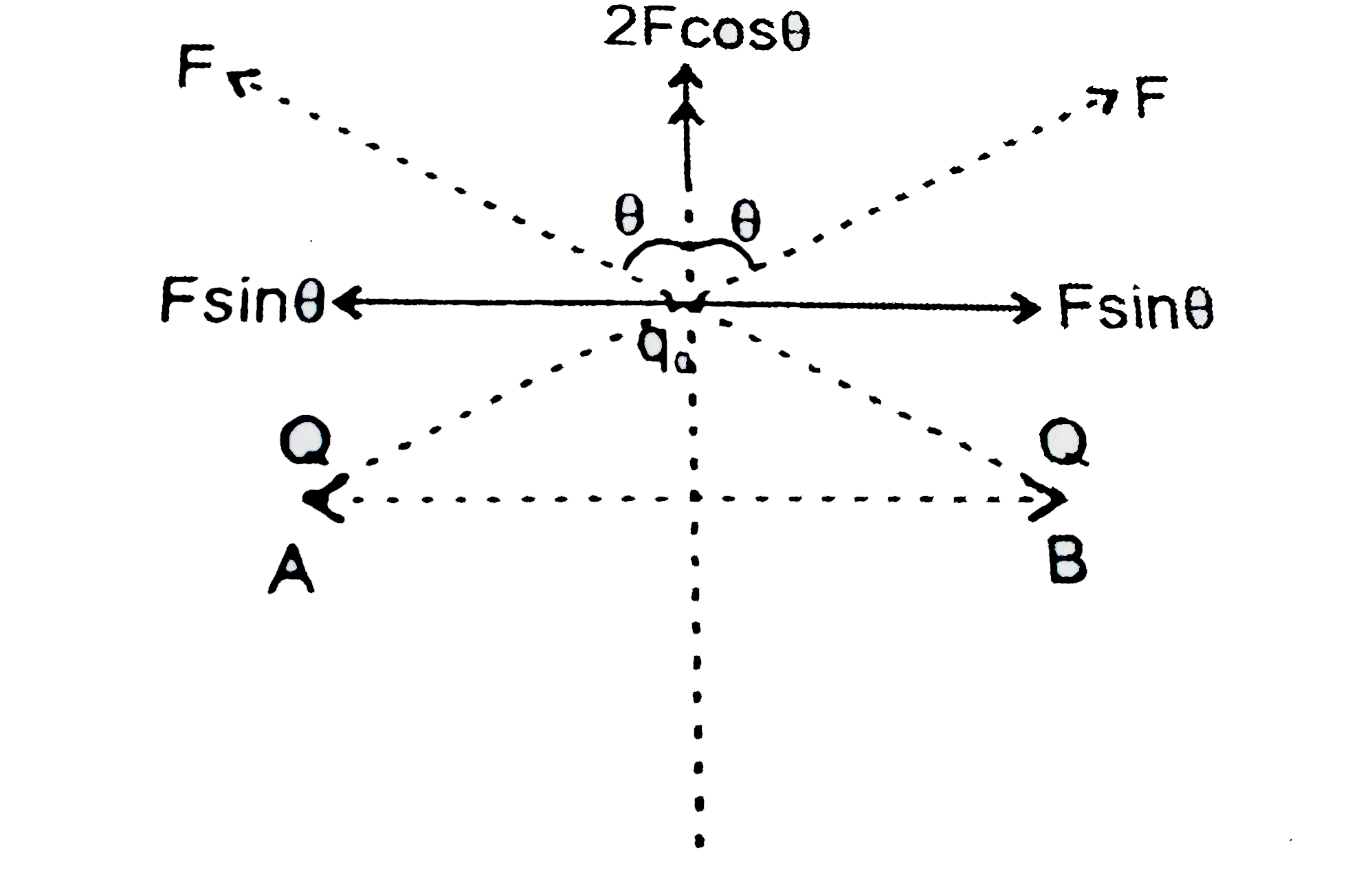Two equal positive point charges 'Q' are fixed at points B (a, 0) and A(-a, 0). Another test charge q0 is also placed at O (0, 0). Show that the equilibrium at 'O' is
(i) Stable for displacement along X-axis
(ii) Unstable for displacement along Y-axis.
(i) 
Initially →FAO+→FBO=0⇒∣∣→FAO∣∣=∣∣→FBO∣∣=KQq0a2
When charge is slightly shifted towards + x axis by a small distance Δx, then.

∣∣→FAO∣∣<∣∣→FBO∣∣
Therefore, the particle will move towards origin (its orifinal position). Hence, the equilibrium is stable.
(ii) When charge is shifted along y axis :

After resolving components, net force will be along y axis So, the particle will not return to its original position & it is unstable equilibrium. Finally, the charge will move to infinity.
Topper's Solved these Questions
- ELECTROSTATICSBOOK - RESONANCECHAPTER - ELECTROSTATICSEXERCISE - Problems
22 Videos
- ELECTROSTATICSBOOK - RESONANCECHAPTER - ELECTROSTATICSEXERCISE - Exercise-1 Section (A)
9 Videos
- ELECTROMAGNETIC INDUCTIONBOOK - RESONANCECHAPTER - ELECTROMAGNETIC INDUCTIONEXERCISE - A.l.P
19 Videos
- EXPERIMENTAL PHYSICSBOOK - RESONANCECHAPTER - EXPERIMENTAL PHYSICSEXERCISE - PART -II
10 Videos
Similar Questions
A positive point charge q1 is placed at (a,0) and another positive point charge q2 is placed at (0,a) . Find the force acting on q1.
View SolutionTwo point charges +q and fixed at (a,0,0) and (−a,0,0). A third point charge −q is at origin. State whether ite equlilbrium is stable, unstable or neutral if it is slightly displaced:
(a) along x-axis. , (b) along y-axis.
View Solution
Knowledge Check
Two equal positive charges Q are fixed at points (a, 0) and (−a,0) on the x-axis. An opposite charge -q at rest is relased from point (0, a) on the y-axis. The charge -q will
AMove to infinityBMove to origin and rest thereCUndergo SHM about the originDExecute oscillatory motion but not SHMTwo point charges q each are fixed at (a,0) and (-a,0). A third charge Q is placed at origin. Electrons potential energy of the system will
Aincrease if Q is slightly displaced along x-axisBdecrease if Q is slightly displaced along x-axisCincrease if Q is slightly displaced along y-axisDdecrease if Q is slightly displaced along y-axisConsider two identical charges placed a distance 2d apart on the x-axis.The equilibrium of a positive test charge placed at the point O midway between them may be
(i) neutral
(ii) stable for displacement along the x-axis
(iii) stable for displacement along the y-axis
(iv) unstable for displacement along the x-axisA(i),(ii),(iii)B(i),(iii),(iv)C(i),(ii),(iv)D(ii),(iii),(iv)
Two equal negative charges −q are fixed at points (0,−a) and (0,a) on y-axis. A poistive charge Q is released from rest at point (2a,0) on the x-axis. The charge Q will
View SolutionTwo points +ve charges q each are placed at (-a, 0) and (a,0), A third +ve charge q0 is placed at (0, y). Find the value of y for which the force at q0 is maximum.
View SolutionTwo equal negative charges are fixed at points and on y-axis. A positive charge Q is released from rest at the point on the x-axis. The charge Q will:
View SolutionConsider a system of two equal points charges, each Q=8μC, which are fixed at points (2m, 0 ) and (-2m, 0). Another charge μ is held at a point (0,0.1m) on the y-axis. Mass of the charge μ is 91 mg . At t= 0 , μ is released from rest and it is observed to oscillate along y-axis in a simple harmonic manner. It is also observed that at t = 0 , the force experienced by it is 9×10−3N.
Charge q is
View SolutionConsider a system of two equal points charges, each Q=8μC, which are fixed at points (2m, 0 ) and (-2m, 0). Another charge μ is held at a point (0,0.1m) on the y-axis. Mass of the charge μ is 91 mg . At t= 0 , μ is released from rest and it is observed to oscillate along y-axis in a simple harmonic manner. It is also observed that at t = 0 , the force experienced by it is 9×10−3N.
Frequency of oscillation is
View Solution
